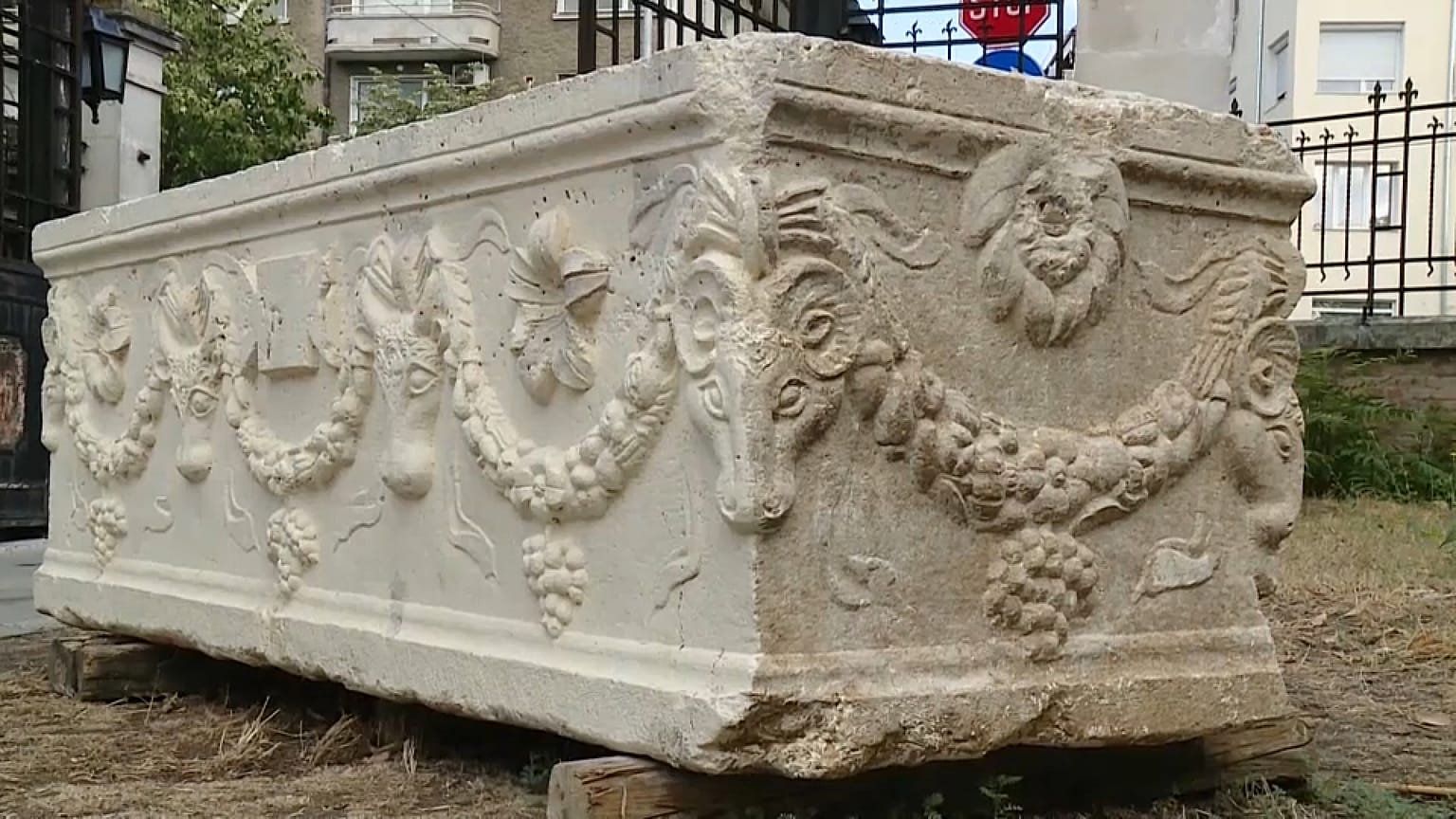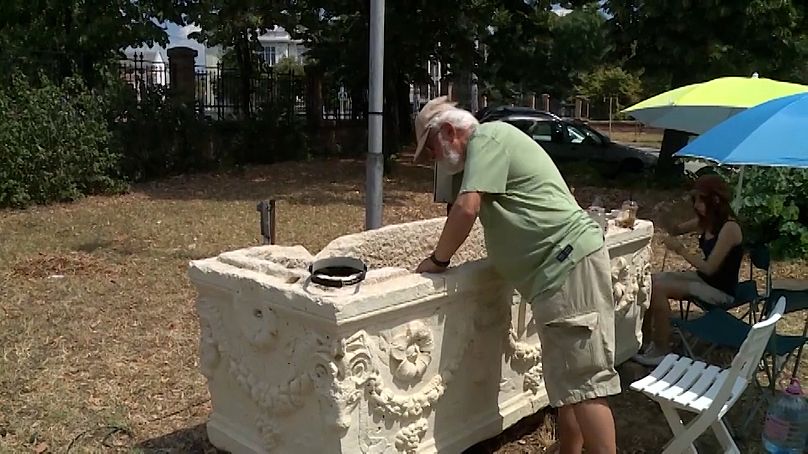The genuine Roman sarcophagus was being used as decoration at a resort near Varna in the Black Sea.
An ancient sarcophagus dating back to the Roman era was discovered on a beach and used as a bar at a Black Sea resort near Varna.
Following its discovery, archaeologists from the Regional History Museum in Varna examined the ancient artefact, identifying its rich ornamentation as part of the "garland sarcophagi" from Roman times.
The sarcophagus is made from shelly limestone, characteristic of northwestern Bulgaria. It features intricate relief decorations on all four sides, including garlands, animal heads, rosettes, and a labrys.
Despite its historical value, photos on social media revealed that the sarcophagus was being used as a bar in a popular beach club for some time, raising concerns about preserving Bulgaria’s cultural heritage.
Archaeologist Alexander Minchev said that all archaeological artefacts legally belong to the state, regardless of where or how they are found. He called for an investigation into how the sarcophagus ended up on the beach, suggesting that this might not be an isolated incident.
The discovery came to light when a former police officer noticed the sarcophagus on the beach while on holiday in Varna and reported it to the local authorities.
The case was referred to the Varna District Prosecutor’s Office, leading to a pre-trial investigation. With assistance from the Interior Ministry and heavy equipment, the sarcophagus was transported to the Varna Archaeological Museum for further examination.
The case has sparked a broader conversation around the preservation of cultural heritage in Bulgaria and the need to protect and properly store archaeological treasures.
















